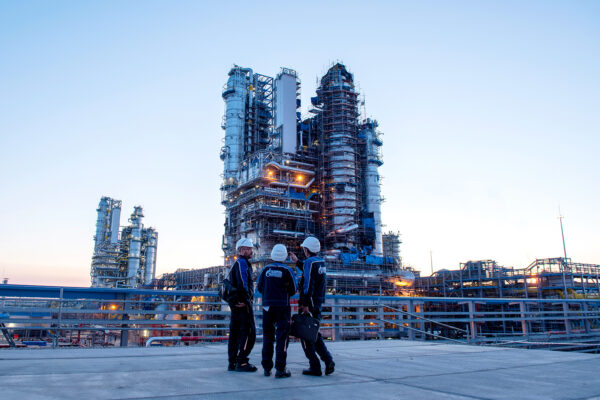
The price of natural gas is skyrocketing. In the United States, it’s up 100 percent from a year ago. In parts of Europe, 500 percent. Japan and Korea are paying record prices for liquified natural gas imports.
Nick Ottens explained the reasons behind this surge here. I will focus on one: Russia’s role.
Russia has been accused of market manipulation by various countries: forcing the price of gas up in order to accelerate the completion of Nord Stream 2. This accusation is unsurprising, given the history of price and supply disputes between Europe and Russia.
But it is wrong.
Leverage
The main argument lies in Russia’s decision not to book additional capacity for gas supplies via Belarus and Ukraine.
However, the Russian gas monopoly, Gazprom, is under no obligation to raise exports. The European Commission was even part of the negotiations that resulted in the “underbooking” of 40 billion cubic meters of gas for the period 2021-24; just 10 percent of the EU’s yearly gas consumption. Gazprom has signaled for years that it is looking for other buyers.
That said, there is a political element to the decision. Reducing flows via Ukraine increases Moscow’s leverage in the region. But it also saves Moscow billions in transit fees it pays its former satellite state. Those are serious gains.
Nord Stream 2 is a commercial as well as a political project. The former tends to get lost in the discussion while the latter is a done deal. The pipeline is ready, it’s just waiting for final regulatory approval from Germany. A deliberate squeeze could jeopardize the project, something neither party wants. Attention is the last thing Russia needs right now.
Low inventory
Then there is the question of Gazprom’s low inventory in Europe. Refinitiv, a financial data firm, reports that Gazprom’s inventory is down 70 percent from a year ago. (So is Europe’s.) But this is not deliberate.
A fire at a condensate plant in Novy Urengoy in Siberia reduced flows into Europe via the Yamal pipeline. Gazprom’s storage sites in the areas covered the shortfall. Now low domestic inventories are limiting the amount of gas it can sell Europe, since the company expects demand to rise at home as well. We can’t blame Russia for prioritizing the needs of its own citizens.
Gazprom’s overall output is nearing ten-year highs. The Netherlands and UK, by contrast, have scaled back production in recent years. America, Australia and Qatar are selling LNG to better-paying customers in Asia. Russia is a major player on the gas market, but it is only one player. It can’t be singled out when prices rise.
Assurances
Russia is just as energy-dependent on the EU as the EU is on Russia, and both want to diversify. Europe is eying LNG from America. Russia has ready buyers in China and Turkey, and they are willing to pay more.
If the EU wants Russia to increase exports, it needs to commit to paying a higher price — long term. Gas production is not an on-and-off switch. Gazprom can’t count on today’s high spot-market prices to last; gas consumption will fall again in the spring. If it invests in raising production now, without assurances of offtake it could find itself operating at a loss.
For the EU, long-term contracts with Gazprom are preferable to the volatility of the spot market. It made a mistake reining in fossil-fuel supply before reducing demand. To ensure a smooth transition to clean energy, the EU needs the stability Russia can provide.
